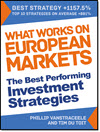If you invest your own money, this guide shows you how to cut through the noise and focus on just five key ratios that truly work. You will learn how to spot undervalued stocks, avoid risky companies, and build a high-quality, low-stress portfolio using proven tools like Qi Value, Shareholder Yield, and Momentum. Best of all, these ratios are simple to use together in a stock screener to find strong ideas in minutes. This article gives you a clear, data-backed system you can apply today to invest with more confidence and less guesswork.
Estimated Reading Time: 6 minutes
Why Financial Ratios Matter
If you invest your own money, you already know the challenge: too much information, not enough clarity. Every stock report or tip seems to offer a new metric to follow. But most of those numbers are noise. To make smart decisions, you need to focus on investment ratios that matter, ratios with a history of working.
Ratios turn complex financial statements into clear signals. They help you find undervalued stocks, avoid risky companies, and stay confident in your process.
Even better, when you use a few key ratios together, you can screen thousands of stocks more effectively in minutes. In this guide, I will show you five of the most powerful ratios you can use right now.
The Core Ratios Serious Investors Should Use
Qi Value – The Smartest Value Signal
Qi Value is a multi-factor score designed to measure how undervalued a company is. It combines several classic valuation ratios into a single metric.
This saves you time and helps avoid mistakes that come from relying on only one signal.
Qi Value includes:
- EBITDA Yield (EBITDA / EV)
- Earnings Yield (EBIT / EV)
- FCF Yield (FCF / EV)
- Liquidity (Q.i.) (Operating profit / Yearly traded value)
This mix helps you avoid “value traps” by rewarding but ignored stocks that are cheap but not broken. You can screen for low Qi Value scores (the lower the more undervalued a company is) in the Quant Investing screener to find strong candidates quickly.
Quant Value Composite Score – Value and Shareholder Returns in One
The Quant Value Composite Score brings together multiple valuation indicators to rank stocks by total attractiveness. Instead of juggling five different valuation ratios, you get one score that tells you which stocks stand out.
The composite includes:
-
Price to Sales: The lower, the better,
-
Price to Earnings (PE): The lower, the better,
-
EBITDA Yield or EBITDA to EV: The higher, the better,
-
FCF Yield (FCF to EV): The higher, the better,
-
Shareholder Yield: The higher, the better.
This score is perfect for disciplined investors who want a simple, yet powerful, valuation ranking system.
Adjusted Slope 125/250 – A Sharper Momentum Signal
Momentum works, but only if you measure it right. The Adjusted Slope solves a key problem: distinguishing real trends from random price spikes.
Adjusted Slope 125/250d tells you how much the share price of a stock has increased over the past year if you average the 125d and 250d adjusted slope values. AND this value is adjusted for how well the calculated increase matches the real increase in the stock price.
This means you are only picking stocks that are moving up in a strong and steady way. Use it with value metrics to find stocks that are cheap and trending up, one of the most reliable combinations in quantitative investing.
Shareholder Yield – The Total Return to Investors
Most people look at dividend yield alone. But Shareholder Yield goes further by including stock buybacks, which also give value back to shareholders.
This ratio was popularised by James O’Shaughnessy and has strong back tested performance.
Formula: Shareholder Yield = Dividend yield + Percentage of Shares Repurchased
This total return measure is especially useful for income investors and those looking for stable, cash-returning companies.
In back tests from 1927 to 2009, Shareholder Yield stocks beat the market by 3.4% per year, with up to a 97% success rate over 10-year periods.
Gross Margin (Marx) – The True Quality Indicator
Gross Margin is often overlooked, but it is one of the best ways to spot companies with real pricing power. It tells you how much money a company makes on the total assets needed to generate its sales.
Formula: Gross Margin (Marx) = (Sales – Cost of Goods Sold) / Total Assets
High margins suggest low asset intensity, a strong brand, low competition, or an efficient operation. Use it with Qi Value to find high-quality value stocks that can defend their profits over time.
Click here to start screening with these exact ratios Now!
How to Apply These Ratios in Real Life
Run a Screen Using These Ratios
In the Quant Investing screener, you can apply up to four filters at once. Here is one setup you can use right now:
-
Qi Value 0% to 20%
-
Gross Margin > 0% to 50%
-
Adjusted Slope (125-day) > 0% to 30%
This simple screen narrows down thousands of stocks to a list of undervalued, high-quality, and upward-trending companies. You can then sort by market cap, price momentum, or backtest the results.
Build a Strong Portfolio with Confidence
Once you get your screen results, apply a final checklist. The Quant Value Newsletter uses a 24-point company analysis system to avoid risks. Here are a few highlights:
-
Free cash flow higher than dividends
-
Debt to equity < 30%
-
No heavy insider selling
-
Net share buybacks positive
-
News check: no major changes or red flags
You do not have to be perfect. But following this system helps you stay focused, reduce bad picks, and stick to what works.
Conclusion: Use the Ratios That Actually Work
There are hundreds of ratios out there, but only a few have proven to deliver long-term results. By focusing on:
-
Qi Value (multi-factor value + low liquidity),
-
Quant Composite (multi-factor value + shareholder returns),
-
Adjusted Slope (momentum strength),
-
Shareholder Yield (true cash return),
-
Gross Margin (Marx) (quality, low asset intensity),
You give yourself the best chance of finding strong stocks without stress or guesswork.
👉 Ready to try it? Start your 30-day free trial of the Quant Investing screener here. No credit card needed. Just data-driven decisions.
Click here to start screening with these exact ratios Now!
FREQUENTLY ASKED QUESTIONS
1. How do I know which financial ratios actually matter?
Most ratios are noise. The ones that matter are backed by research and help you spot undervalued, high-quality, or trending stocks. Start with five: Qi Value, Quant Composite, Adjusted Slope, Shareholder Yield, and Gross Margin. These have worked over decades and are easy to screen with.
2. I am afraid of picking a value trap. How does Qi Value help me avoid that?
Qi Value combines several signals—like Earnings Yield and FCF Yield—and adds a liquidity filter. This points you to cheap stocks that are still healthy and ignored by the crowd. That mix helps you avoid the classic trap: a low-priced company that stays low because it is broken.
3. Can I use one ratio to pick stocks or do I need to use them all?
One ratio can help, but using a few together is better. Think of it like building a team. Each ratio does one job well. Qi Value finds value, Adjusted Slope checks momentum, and Shareholder Yield confirms cash returns. Combine them to get a full picture.
4. What is the easiest way to apply these ratios without doing all the math myself?
Use the Quant Investing screener. You can filter stocks by Qi Value, Adjusted Slope, and more. Try this setup:
-
Qi Value: bottom 0% to 20%
-
Gross Margin: above 0% to 50%
-
Adjusted Slope (125d): over 0% to 40%
This will give you cheap, quality stocks trending up.
5. How do I know a company is really returning cash to investors, not just paying dividends?
Look at Shareholder Yield, not just dividend yield. It adds buybacks to the picture. A company that pays a dividend and buys back shares is giving you more total return. Backtests show this combo beat the market by over 3% per year from 1927 to 2009.
6. What makes Gross Margin (Marx) better than other quality metrics?
Gross Margin (Marx) tells you how much profit a company makes using its total assets. High margins often mean strong brands or efficient operations. When combined with Qi Value, it helps you find quality value stocks that are built to last.
7. How do I stay confident when my stocks go sideways or down at first?
Use a checklist. The Quant Value Newsletter has a 24-point system. It checks things like cash flow, insider activity, and debt. If your stock passes most checks and the market trend is still up, you can stay calm and let the system work. A good stop loss system also helps keep you out of value trap investments.


